
INTERNATIONAL JOURNAL OF MORPHOLOGY
Scope & Guideline
Unveiling the Secrets of Structural Diversity
Introduction
Aims and Scopes
- Morphological Studies Across Species:
The journal emphasizes comparative morphology, investigating anatomical variations in humans and other animals. This includes studies on skeletal structures, soft tissues, and organ systems, providing insights into evolutionary adaptations and clinical relevance. - Clinical Implications of Anatomical Variations:
Many articles address how morphological variations can affect clinical practices, such as surgical techniques and diagnostic imaging. This focus aids in improving patient outcomes by tailoring medical interventions to anatomical differences. - Innovative Methodologies in Morphological Research:
The journal publishes studies utilizing advanced technologies like 3D imaging, cone-beam computed tomography, and artificial intelligence, highlighting the integration of new methodologies in anatomical research. - Educational Approaches in Anatomy:
It also explores pedagogical strategies in teaching anatomy, including the use of digital resources and interactive learning techniques, aimed at enhancing the educational experience for students in the health sciences. - Histological and Biochemical Investigations:
Research articles frequently incorporate histological techniques and biochemical analyses to relate morphological findings with cellular and molecular processes, enriching the understanding of anatomy in health and disease.
Trending and Emerging
- Integration of Technology in Morphological Research:
There is a growing trend towards utilizing advanced imaging technologies, such as 3D printing and cone-beam computed tomography, to enhance the study of morphology. These technologies facilitate detailed anatomical assessments and improve educational resources. - Focus on Functional Morphology:
Recent publications increasingly emphasize the functional implications of morphological characteristics, linking anatomical features to physiological performance and clinical outcomes, particularly in sports and rehabilitation. - Interdisciplinary Research Approaches:
Emerging studies highlight the integration of anatomy with fields such as genetics, biochemistry, and bioinformatics, reflecting a trend towards a more holistic understanding of morphology in health and disease. - Health Implications of Morphological Variations:
There is an increased focus on the clinical significance of anatomical variations, particularly in surgical contexts and personalized medicine, underscoring the relevance of morphology in improving patient care. - Pedagogical Innovations in Anatomy Education:
The journal is increasingly publishing research on innovative teaching methods, including gamification and digital platforms, aimed at enhancing student engagement and learning outcomes in anatomy courses.
Declining or Waning
- Basic Anatomical Descriptions:
There appears to be a waning interest in purely descriptive anatomical studies without clinical or educational applications. Researchers are increasingly focusing on studies that demonstrate the relevance of anatomical findings to clinical practice. - Historical Anatomical Studies:
Papers focusing solely on historical perspectives of anatomy, such as the evolution of anatomical terminology or historical figures in anatomy, have become less frequent, indicating a shift towards contemporary applications. - Traditional Teaching Methods in Anatomy Education:
The emphasis on innovative teaching methodologies, such as digital and interactive learning, suggests a decline in the publication of studies promoting traditional, lecture-based anatomy education. - Studies Lacking Multidisciplinary Approaches:
Research that does not incorporate multidisciplinary perspectives, such as integrating physiology, biochemistry, or clinical insights, seems to be less favored, as the journal increasingly values comprehensive approaches to morphology.
Similar Journals

Evolutionary Biology
Shaping the Future of Evolutionary ThoughtEvolutionary Biology is a distinguished academic journal published by Springer, focusing on the intricate fields of ecology, evolution, behavior, and systematics. This journal, with the ISSN 0071-3260 and E-ISSN 1934-2845, has established itself as a critical platform for cutting-edge research and innovative ideas that shape our understanding of biological evolution and its implications. Operating from Germany, it ranks in the Q2 quartile in its category for 2023, placing it in the top tier of journals recognized for quality and impact, with a Scopus rank in the 66th percentile among its peers. Despite not being Open Access, this journal ensures comprehensive dissemination of knowledge essential for researchers, professionals, and students passionate about evolutionary studies. With a publication history tracing back to 1993 and converging years up to 2024, Evolutionary Biology continues to significantly impact the academic landscape, fostering dialogue and collaboration across various disciplines within the biological sciences.

Medical Molecular Morphology
Pioneering Insights in Medical Pathology.Medical Molecular Morphology, published by SPRINGER JAPAN KK, stands as a significant resource in the fields of medicine and molecular biology, bridging critical insights between histological studies and modern therapeutic approaches. With an ISSN of 1860-1480 and E-ISSN of 1860-1499, this journal has evolved since its inception in 1996 and has continued to provide a platform for innovative research through 2024, establishing its relevance particularly in the realms of medical pathology and molecular morphology. Although categorized as Q3 in Medicine (miscellaneous) and Q4 in Molecular Biology per the 2023 quartiles, the journal's unique contributions cannot be understated, as evidenced by its Scopus rankings, which place it in the 52nd percentile for Pathology and 19th percentile for Molecular Biology. The journal’s mission focuses on disseminating valuable findings that enhance the understanding of cellular and molecular structures and their implications in health and disease. As access options are not currently open access, it remains essential for professionals and researchers to consider the journal's contributions as they pursue academic growth and impactful research in these dynamic fields.
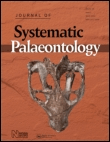
JOURNAL OF SYSTEMATIC PALAEONTOLOGY
Decoding Earth's History, One Fossil at a TimeJOURNAL OF SYSTEMATIC PALAEONTOLOGY, published by Taylor & Francis Ltd in the United Kingdom, stands as a premier platform for advancing the discipline of palaeontology. With an ISSN of 1477-2019 and an E-ISSN of 1478-0941, this journal has achieved an impressive ranking of Q1 within its category for the 2023 Scopus metrics, underscoring its significance in the field. Currently ranked #10 out of 113 in Earth and Planetary Sciences – Paleontology with a remarkable 91st percentile, it serves as an essential resource for researchers, professionals, and students alike. The journal aims to publish cutting-edge research that fosters a deeper understanding of systematic palaeontology, including the evolutionary relationships and biodiversity of extinct organisms. While it operates under a traditional access model, the Journal’s expansive reach from its inception in 2003 through to 2024 ensures it continues to play a vital role in shaping the future of palaeontological studies.
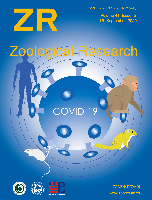
ZOOLOGICAL RESEARCH
Innovating Conservation Practices for a Sustainable FutureZoological Research, published by Science Press, stands as a premier open-access journal in the fields of animal science, zoology, and ecology. Since its inception in 1980, it has fostered an inclusive platform for innovative research and dialogue within the scientific community, enabling researchers from across the globe to share their findings and insights. The journal's significant impact is underscored by its classification in the Q1 quartile across multiple categories, including Animal Science and Zoology, Ecology, and Nature Conservation for 2023, as well as its impressive rankings within Scopus, placing it in the top tier of its respective fields. Situated in Beijing, China, Zoological Research not only contributes to advancing knowledge but also emphasizes the critical importance of conservation practices in today’s rapidly changing ecosystems. With its commitment to open access, researchers, educators, and students alike benefit from immediate, unrestricted access to vital scientific information, making it an essential resource for anyone involved in the biological sciences.
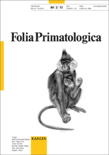
FOLIA PRIMATOLOGICA
Fostering Understanding of Primates in a Global ContextFOLIA PRIMATOLOGICA is a prestigious academic journal published by BRILL, focusing on the interdisciplinary fields of animal science and zoology, as well as ecology and evolutionary biology. With an ISSN of 0015-5713 and E-ISSN 1421-9980, the journal has been a significant contributor to the understanding of primatology since its inception in 1963 and continues to disseminate impactful research through 2024. The journal is recognized in the Q2 quartile for Animal Science and Zoology and Q3 for Ecology, Evolution, Behavior, and Systematics, showcasing a solid reputation within the academic community. Both Scopus rankings and percentiles indicate its influence, with a rank of 137/490 in Animal Science and 277/721 in Ecology and Evolution, reflecting its relevance and commitment to promoting high-quality research. Though it does not operate on an open-access model, FOLIA PRIMATOLOGICA remains a vital resource for researchers, professionals, and students alike, striving to advance the understanding of primates and their ecological contexts within a global framework.
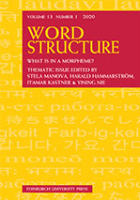
Word Structure
Pioneering Research in Morphology and LinguisticsWord Structure is a premier journal published by Edinburgh University Press, specializing in the dynamic field of linguistics and language studies. Since its inception in 2008, this journal has carved a niche within the academic community, achieving an impressive Q1 ranking in the Linguistics and Language category for 2023, further affirming its reputation as a leading platform for innovative research. With its robust rankings in both the arts and humanities and social sciences spheres, positioned in the top percentiles, Word Structure serves as an essential resource for linguists, researchers, and students interested in the intricate mechanisms of word formation and morphology. Although it does not offer open access, the journal is dedicated to advancing the understanding of linguistic theory and empirical findings, making significant contributions to ongoing discussions in the field. By facilitating scholarly dialogue and promoting high-quality research, Word Structure plays a crucial role in shaping contemporary linguistics and enhancing the academic discourse surrounding language structures.
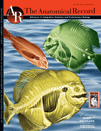
Anatomical Record-Advances in Integrative Anatomy and Evolutionary Biology
Unveiling the Tapestry of Life Through Integrative Research.Anatomical Record-Advances in Integrative Anatomy and Evolutionary Biology, an esteemed journal published by WILEY, serves as a pivotal platform for scholars in the fields of anatomy, biotechnology, ecology, evolutionary biology, and histology. With an ISSN of 1932-8486 and an E-ISSN of 1932-8494, this journal has demonstrated its academic rigor by maintaining a Q2 ranking across multiple relevant categories, including Anatomy and Biotechnology, and consistently achieving a high Scopus ranking in its respective fields. Its scope, covering integrative approaches to anatomical research and evolutionary studies, fosters interdisciplinary collaboration and innovation. Researchers and practitioners can access the journal through various open-access options, ensuring that groundbreaking findings are disseminated widely. As a vital resource for advancing knowledge and exploring emerging trends, this journal greatly contributes to the understanding of biological systems and evolutionary processes, making it an essential read for those dedicated to pushing the boundaries of their respective disciplines.
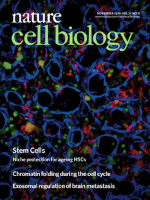
NATURE CELL BIOLOGY
Elevating Research in Biochemistry and Molecular BiologyNature Cell Biology, published by Nature Portfolio, is a premier journal in the field of Cell Biology, distinguished by its impactful contributions to understanding cellular mechanisms and processes. With an impressive impact factor that places it in the top tier (Q1) of its category, it ranks #9 out of 285 in Scopus's metrics, reflecting a 97th percentile in the fields of Biochemistry, Genetics, and Molecular Biology. The journal has been a vital resource since its inception in 1999 and continues to deliver high-quality, peer-reviewed research that advances the study of cellular structures and functions. Although it does not offer open access options, subscribers and institutional libraries can access this wealth of knowledge to keep abreast of the latest discoveries and methodologies in cell biology. Researchers, professionals, and students alike will find Nature Cell Biology to be an indispensable tool for fostering innovation and facilitating academic discourse in this dynamic field.
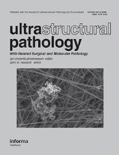
ULTRASTRUCTURAL PATHOLOGY
Bridging Clinical Insights with Experimental DiscoveriesULTRASTRUCTURAL PATHOLOGY is a prestigious academic journal published by Taylor & Francis Inc, focusing on the intricate and detailed aspects of pathology as well as forensic medicine since its inception in 1980. With an ISSN of 0191-3123 and an E-ISSN of 1521-0758, this journal provides a vital platform for researchers and professionals to disseminate innovative findings pertinent to both clinical and experimental pathology. Despite not being an open-access journal, its contributions are critical within its categories, positioned at the Q3 quartile in Pathology and Forensic Medicine and Q4 in Structural Biology as of 2023. The journal's reputation is further underscored by its Scopus rankings, placing it in the 41st percentile for Pathology and 15th percentile for Structural Biology, indicating a competitive standing in these fields. ULTRASTRUCTURAL PATHOLOGY aims to foster rigorous scholarly discourse and advance knowledge through the publication of original research articles, reviews, and case studies, making it an essential resource for academics, practitioners, and students engaged in the evolving domains of pathology and structural biology.
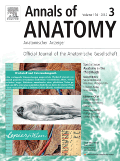
ANNALS OF ANATOMY-ANATOMISCHER ANZEIGER
Unveiling the Complexities of Anatomy and BeyondANNALS OF ANATOMY - ANATOMISCHER ANZEIGER is a premier journal published by Elsevier GmbH, focusing on the intricacies of anatomical research and developmental biology. Established in 1992, this journal has continuously contributed to the advancement of knowledge in these fields, boasting an impressive impact factor that positions it within the Q2 quartile for Anatomy and a respectable ranking in Developmental Biology. With a Scopus ranking of #17 in Anatomy and #45 in Developmental Biology, ANNALS OF ANATOMY stands as a critical resource for researchers, professionals, and students alike, fostering scholarly dialogue and innovation. While currently not an open-access journal, its comprehensive scope and rigorous peer-review process ensure that the research published is of the highest quality. Based in Germany, this journal addresses a diverse range of topics and remains an essential platform for disseminating significant findings in the anatomical sciences and their interconnections with other biological fields.